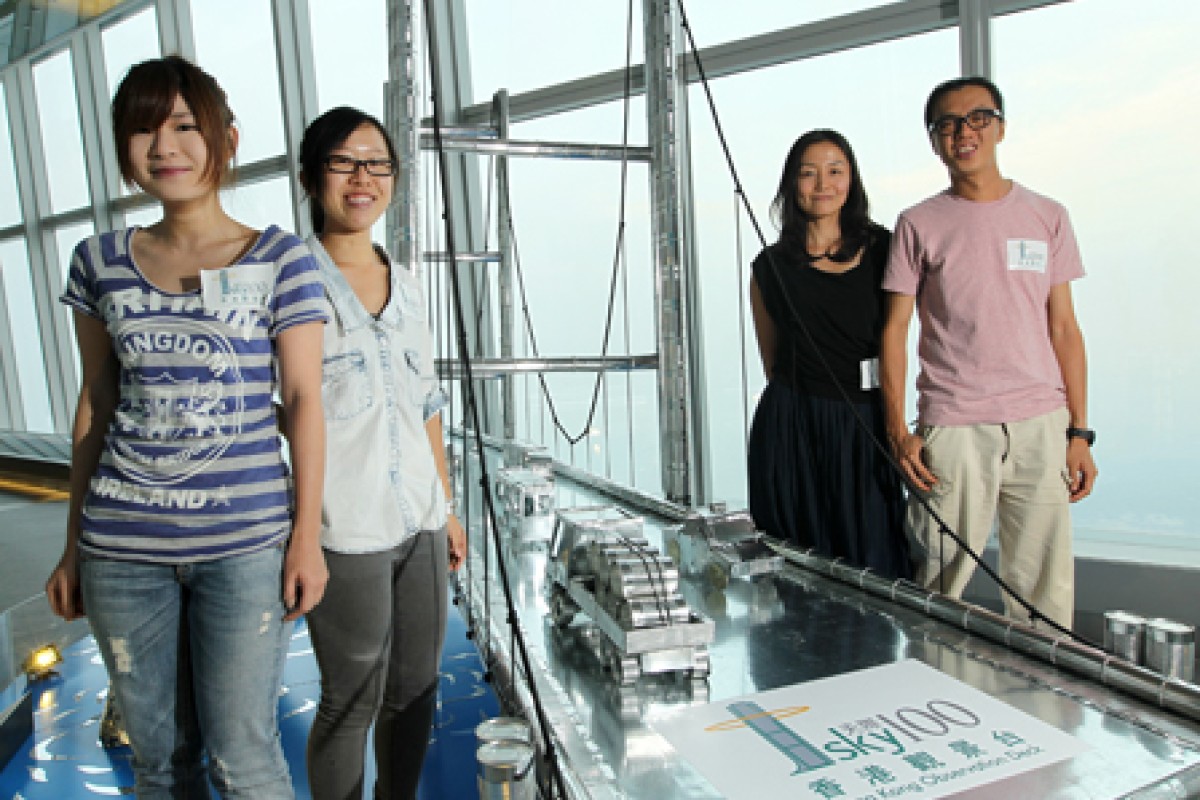 Artists and students pose with their creations; stacked-can replicas of Tsing Ma Bridge and a sampan. Other exhibits feature a double-decker tram and Tsim Sha Tsui's Clock Tower (below)
Artists and students pose with their creations; stacked-can replicas of Tsing Ma Bridge and a sampan. Other exhibits feature a double-decker tram and Tsim Sha Tsui's Clock Tower (below)Then came the century-old trams. Slithering through streets with dazzling neon lights, the double-deckers marked Hong Kong's status as a metropolitan city.
In 1997 came Tsing Ma Bridge, the world's 8th longest suspension bridge.
Seven artists, together with 17 secondary students, decided to retell Hong Kong's transformation into a world-class financial and cultural hub in an original way: by stacking up cans at the Sky100 Hong Kong Observation Deck.
Appropriately enough, the exhibition, which pays homage to the city's "can-do" spirit, is called Yes We Can!
They used more than 20,000 everyday titanium cans to recreate five local landmarks: Mong Kok's neon light-lit street, a sampan, a tram, Tsim Sha Tsui's Clock Tower and the Tsing Ma Bridge.
"When we looked to the west side of Hong Kong, we saw this landmark," says artist Pow Cheuk-mei, who led a team of four to recreate Tsing Ma Bridge with 4,000 cans.
To spice up the design, she added two Chinese White Dolphins on the side and some vehicles on the bridge. "The dolphins are Hong Kong's mascots, and all these additional displays will make the bridge more lively," she says.
Pow and her team had only one month to complete the bridge. First they had to build the base and pedestals from cans. Then, they used rubber bands to prop up the bridge as suspension cords.
"The schedule was tight, and constructing the can pattern was tough, say Tang Kit-ying and Michiko Nakao, the other two artists on the team.
The sampan is another eye-catcher. It was created by artist Ho Yuen-leung and the 17 secondary school students.
"We decided on a sampan because it is attractive and represents the city. We want to bring attention to these fading old city icons," says Ho.
Building a sampan out of cans is certainly not child's play. It was especially challenging to recreate the boat's curving bottom. "Because it can collapse easily, we had to be careful and collaborate well at all time," say Maggie Wong Mei-ki and Shirley Chan Wing-yan, who are both students at Hong Kong Taoist Association The Yuen Yuen Institute No 3 Secondary School.
They also faced the challenge of gluing the shiny smooth cans firmly together.
"Instead of simply putting glue between cans, we put it between the top circular rings of cans, and it has proven to be a success," Ho says.
Not everyone was happy with the exhibition, though. The Friends of Green environmental group wondered about the environmental effects of so many cans.
Yet the organisers assured green groups that no food had been wasted as the cans had been ordered especially for artistic purposes. They were made of titanium and are all recyclable.
Yes We CAN! is on display at Sky100 Hong Kong Observation Deck until September 2. For details, please click here.
